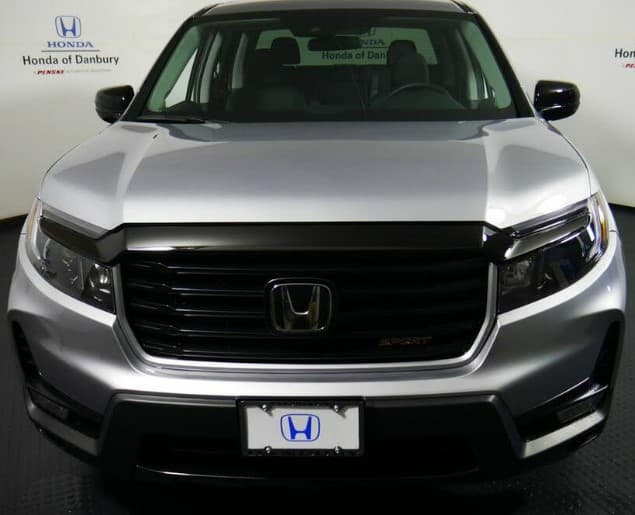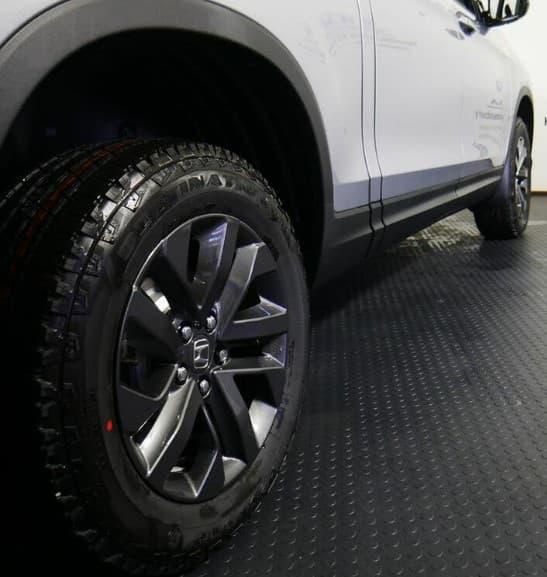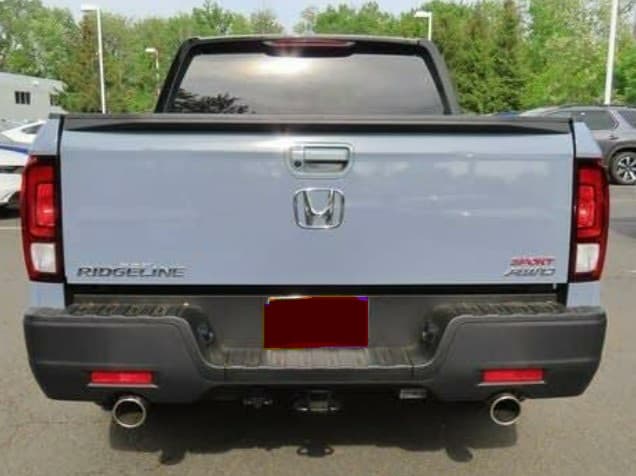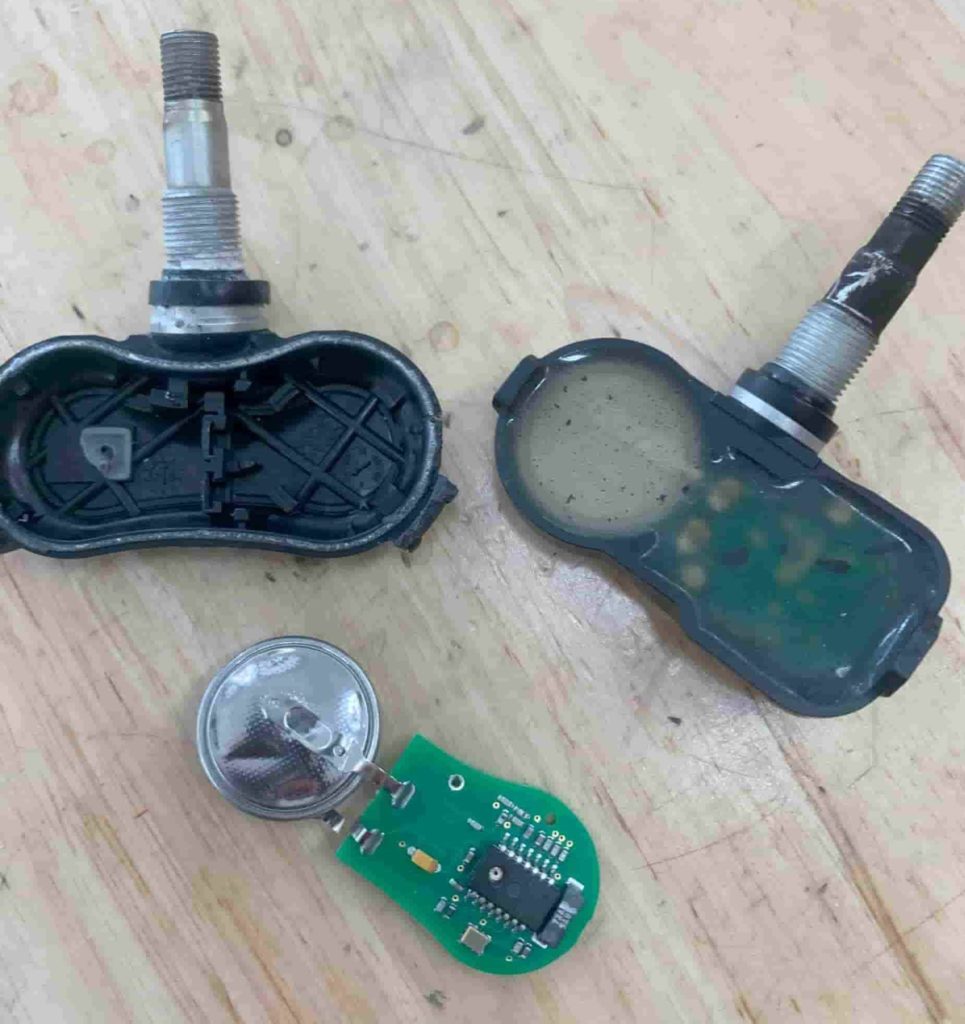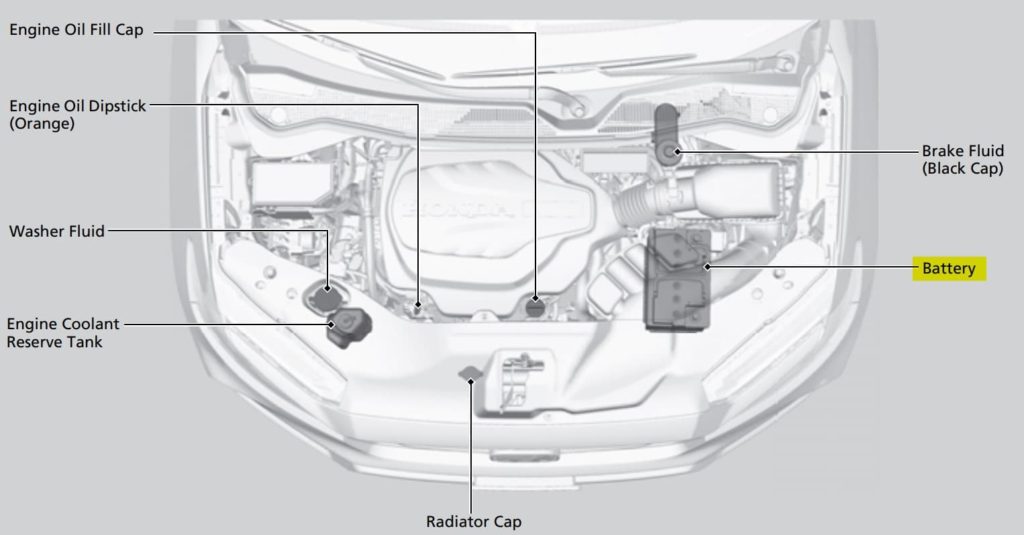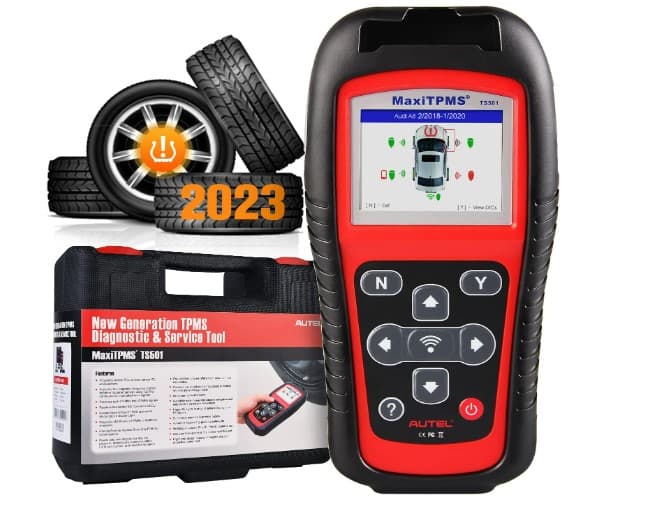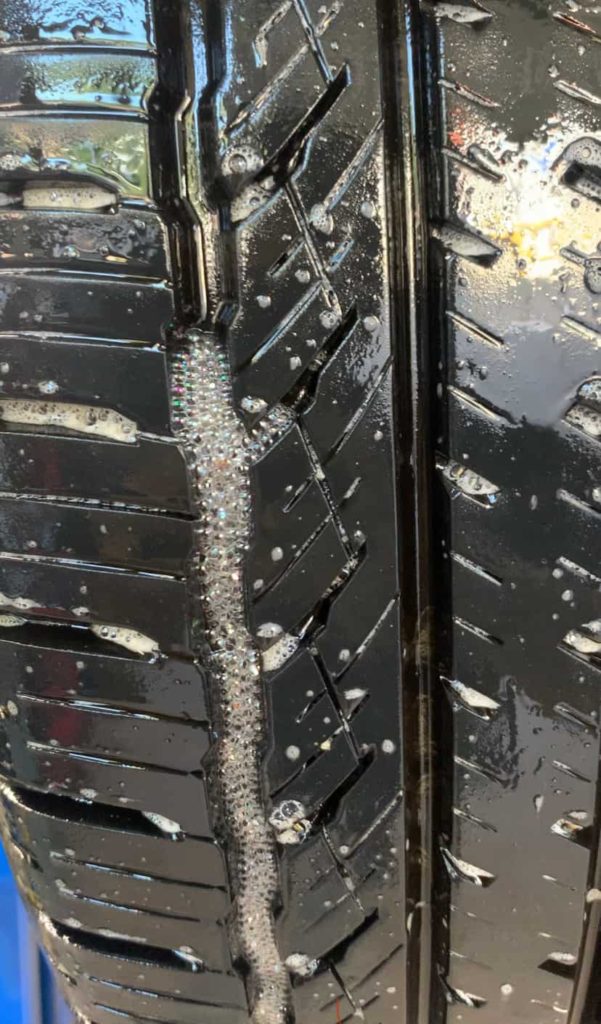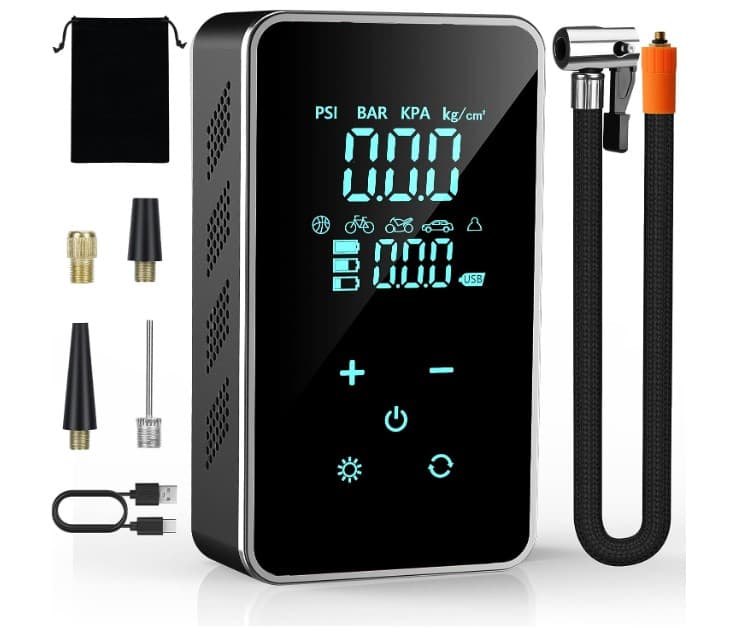How the Honda Ridgeline TPMS Works
The Honda Ridgeline Tire Pressure Monitoring System (TPMS) is an underrated safety feature that helps keep track of your vehicle’s tire pressure to ensure safe and efficient driving. This is how it works:
1. Components:
The TPMS is made up of two key components: the TPMS sensors which are located within each tire (excluding the spare tire), and the TPMS control unit which is a computer located within the vehicle.
2. Sensing Tire Pressure:
Each TPMS sensor in the tires measures the tire’s air pressure. The sensors themselves are powered by a small battery and utilize a combination of pressure sensing, signal processing, and wireless communication technologies.
3. Transmission to the Control Unit:
The measured tire pressure is then transmitted wirelessly to the TPMS control unit in the form of radio frequency signals. The transmission occurs regularly while driving and it provides real-time updates on the condition of each tire. The sensors also transmit other data such as their battery status and internal temperature which can both affect pressure readings.
4. Analyzing and Interpreting Data:
The TPMS control unit analyzes and interprets the data received from the sensors. It verifies the data against predetermined standards set by Honda for optimal tire pressure. If the tire pressure is too high or too low the control unit will identify this as an anomaly.
5. Alerting the Driver:
If an anomaly is detected the TPMS control unit will immediately alert the driver via the TPMS warning light on the dashboard. This is the yellow exclamation point inside a tire symbol.
6. Driver Action:
Once the driver has been alerted it’s important to take action as soon as it’s safe to do so. This usually involves checking the tire pressure manually with a tire pressure gauge and inflating or deflating the tires as necessary.
The Honda Ridgeline Tire Pressure Monitoring System is a sophisticated, real-time monitoring system designed to alert the driver of potentially unsafe changes in tire pressure. By leveraging advanced sensor and communication technologies it enhances road safety and optimizes vehicle performance.
Steps to Reset 2018-2023 Honda Ridgeline TPMS
Step 1: Check and Adjust the Tire Pressure to make sure all 4 tires are at the exact correct pressure levels.
Step 2: Turn the ignition to the ON position (press engine start button twice without your foot on the brake) or have the vehicle engine running.
Step 3: Select the HOME button on the top left of the infotainment system.
Step 4: Select SETTINGS on the infotainment monitor.
Step 5: Select VEHICLE on the infotainment monitor.
Step 6: Select TPMS CALIBRATION.
Step 7: Select CALIBRATE.
Step 8: Drive the Honda Ridgeline for 3-5 miles at speeds over 20 Mph to finalize the calibration process.
Steps to Reset 2011-2017 Honda Ridgeline TPMS
Step 1: Check and adjust all 4 tires to verify the tire pressure is at the recommended pressures.
Step 2: Use the UP and Down arrows on the steering wheel to scroll and select VEHICLE SETTINGS. (the middle button between the up and down arrows is select)
Step 3: Select TPMS CALIBRATION.
Step 4: Select CALIBRATE.
Step 5: Drive the Ridgeline for 3 to 5 miles at speeds over 20 Mph to complete the calibration process.
Steps to Reset Honda Ridgeline Tire Rotation Light
Step 1: Select the HOME button on the infotainment system
Step 2: Select SETTINGS on the infotainment system
Step 3: Select VEHICLE.
Step 4: Scroll Down and select MAINTENANCE INFORMATION.
Step 5: Select TIRE ROTATION
Step 6: Select RESET
How to Access Honda Ridgeline Tire Pressure Dispaly
To access and check the current tire pressure on your Honda Ridgeline, use the buttons on your steering wheel:
Switch the ignition to ON.
Press the UP or DOWN information button until you see the tire pressure screen.
When to Recalibrate Honda Ridgeline TPMS
After Honda Ridgeline tire pressure has adjusted.
After a TPMS sensor has been replaced or swapped from one wheel to another.
After tire rotations.
After tire balances or wheel alignments.
After a wheel or tire has been replaced. This includes swapping between winter and summer tires.
After your Honda Ridgeline battery is charged, has died, or jumped.
Tire Pressure
Does the Weather Affect Tire Pressure?
Weather can significantly impact the tire pressure of a Honda Ridgeline. As a general rule, for every 10 degrees Fahrenheit change in air temperature tire pressure will adjust in the same direction by about 1 PSI (pound per square inch). This means that as the weather gets colder tire pressure will drop leading to under-inflation. Conversely, as temperatures rise, the tire pressure will increase and potentially lead to over-inflation. This is why when you start your car on a cold morning the tire pressure light is on and then as you drive and the tires warm up, the tire pressure light turns off.
How to Check and Adjust Tire Pressure
Checking the tire pressure in your Honda Ridgeline is a simple process. Here is a quick step-by-step guide:
Purchase a Tire Pressure Gauge: You’ll need a reliable tire pressure gauge.
Wait for the Tires to Cool: To get an accurate reading you should check your tire pressure when the tires are cold. This is after the car has been parked for a few hours or hasn’t been driven more than a mile.
Remove the Valve Cap: The valve cap is located on the tire valve stem. It’s a small cap that you can unscrew by hand.
Attach the Gauge: Place the pressure gauge onto the valve stem and press down until the hissing sound stops. Make sure it’s on there tight or the reading won’t be accurate.
Read the Pressure: The gauge will display the tire pressure. This is typically measured in PSI (pounds per square inch).
Compare to Recommended Levels: Compare the measured tire pressure to the recommended pressure. The recommended tire pressure for the Honda Ridgeline is 35 Psi. You can confirm this by checking the sticker on the drive side door jamb.
Adjust Pressure if Needed: If the pressure is too high, release some of the air. If it’s too low add air at a service station or with your own air compressor until it matches the recommended level.
Replace the Valve Cap: Once you’ve finished checking and adjusting the pressure, don’t forget to screw the valve cap back onto the valve stem.
Repeat for All Tires: Make sure to check all four tires.
Spare Tire: Set the spare tire pressure to 60 Psi.
2022 Honda Ridgeline Tire Pressures
TIRE SIZE | FRONT PSI | REAR PSI |
245/60R18 | 35 | 35 |
SPARE | 60 | 60 |
Impacts of Driving the Ridgeline With Underinflated Tires
Driving a Honda Ridgeline, or any vehicle, with underinflated tires can have several negative impacts, including:
Reduced Fuel Efficiency: Underinflated tires create more resistance. This means the vehicle has to work harder to move which leads to increased fuel consumption.
Poor Handling: Underinflated tires will negatively affect the Ridgelines handling and responsiveness. This will make it harder and less comfortable to steer.
Increased Tire Wear: When a tire is underinflated more of its surface area touches the ground, leading to increased and uneven tire tread wear. This reduces the lifespan of the tires and leads to more frequent replacements.
Higher Risk of Tire Damage: Underinflated tires are more susceptible to damage like punctures or tire blowouts because they can’t adequately withstand impacts from potholes, debris, or sharp objects on the road.
Overheating: Underinflated tires can generate excessive heat due to increased friction, and potentially lead to tire failure. The compounds that tires are made of are not designed to be able to withstand this extreme heat and will eventually begin to deteriorate.
Decreased Load Carrying Capacity: If your tires are underinflated they may not be able to carry or tow the truck’s maximum load safely.
Increased Braking Distance: Underinflated tires may increase the vehicle’s braking distance which leads to a higher risk of accidents. This can be especially dangerous in emergency situations.
What Will Cause the Honda Ridgeline Tire Pressure Light to Turn On?
Spare Tire: When you’re operating your Honda Ridgeline with a spare tire on it will trigger the tire warning light to illuminate. (Honda Ridgeline spare tires do not have tire pressure sensors inside them)
Seasonal Weather temperature changes: A shift in air temperature will result in a reduction of tire pressure.
Tire puncture or leak: Road debris such as nails, screws, or other sharp objects can penetrate the tire’s tread and cause an air leak.
Faulty TPMS sensor: If tire pressure sensors are damaged or defective, they may cause the tire pressure light to behave improperly, resulting in inaccurate air pressure readings.
Tire damage: Hitting potholes or curbs can cause structural damage such as tire bulges and bubbles on the tires sidewall. These damages weaken the tire and can result in air pressure loss.
Sensor battery life: Each tire pressure sensor runs on limited battery power and will ultimately run out of juice.
Recent tire rotation or replacement: Once the tires have been rotated or replaced, you must recalibrate the Honda Ridgeline’s tire pressure monitoring system. This is essential to avoid confusion about the tire positions – without recalibration, the TPMS may continue to identify the front tires as being at the rear, and vice versa.
Valve stem issues: A compromised or leaking valve stem (metal or rubber) can lead to a decrease in tire pressure, which can in turn trigger the air pressure warning light.
Wheel or rim issues: Cracked or damaged wheels will cause air to leak.
Altitude changes: A shift in elevation while driving can impact the tire pressure, potentially leading to alerts for low tire pressure.
Natural pressure loss: Tires that remain stationary for extended periods can slowly lose air pressure naturally due to variations in temperature and the onset of tire dry-rot.
TPMS Software Updates: Occasionally Honda may put out a TPMS software update for the Ridgeline.
Is It Safe to Drive With the Tire Pressure Light On?
Knowing why the tire warning light in your Honda Ridgeline is on is important for figuring out how safe it is to keep driving. Could there be a hole in the tire making it lose air? If so, is the air escaping slowly or quickly? Or could the tires be okay but the pressure sensors are not working right? While there may be times when it’s not immediately dangerous to drive with the tire light on, it usually means there’s a big safety issue. Understanding the real problem will help you decide wisely and safely about whether to keep driving your Ridgeline with the tire light on.
TPMS Malfunction Indicator
The Honda Ridgeline has a TPMS malfunction indicator that lets you know when the tire pressure system isn’t working properly. The malfunction indicator shares the same dashboard tire light as the low tire pressure warning (a yellow exclamation point), yet it serves a distinct purpose. When there’s a problem with the Honda Ridgeline’s TPMS, the warning light will blink for 60 seconds and then remain lit. This pattern will repeat every time you operate the truck until the issue is resolved.
Tire Pressure Sensor Batteries
Each tire pressure sensor in the Honda Ridgeline operates independently, drawing power from an integrated battery, much like those in key fobs or wristwatches. These batteries are encased in a plastic shell and directly attached to the sensor’s circuit board, making them non-replaceable. This means that when the battery depletes or is close to running out, the whole sensor must be replaced. The battery’s lifespan can be affected by several factors including driving conditions, changes in weather, and the frequency and distance of your drives. According to Honda the sensor batteries are typically designed to last between 7 to 10 years. However, from my own experience in replacing many TPMS sensors, I’ve seen their lifespans range from as short as 3 or 4 years to as long as 20 years.
Diagnosing Honda Ridgeline TPMS
Should you encounter problems with the tire pressure light in your Honda Ridgeline, here are some possible solutions you can explore:
Solution 1: Is the Tire Losing Air?
Should the tire pressure light switch off after you’ve inflated the tires, only to reappear a few minutes, hours, or days later, it’s a sign that one of your tires has a leak. If the tires aren’t deflating and continue to hold the recommended air pressure levels, then the issue lies elsewhere.
Solution 2: Activate a Sleeping Pressure Sensor
If the tire light is on and you’re sure your tires are not losing air, sometimes the sensor just needs to be “woken up.” First, figure out which sensor is causing the issue then let out about 15 to 20 Psi from the relevant tire before inflating it again to 45 Psi (35 Psi plus an extra 10 Psi). Next, drive the Honda Ridgeline for a few miles at low speeds. For your safety it’s best to stay off highways or busy roads. After driving for approximately 10 to 15 minutes, park your truck. Then, readjust the tire pressure back down to the recommended 35 Psi and take your vehicle out for another drive.
Solution 3: Reset the Honda Ridgeline ECU
If you’ve tried everything else and your tires aren’t leaking air, you can manually clear the error codes from your Honda Ridgeline’s electronic control unit (ECU). You do this by detaching the negative terminal of your truck’s 12-volt battery. Leave it disconnected for a few minutes, then reconnect the terminal. This action essentially wipes all existing fault codes from the ECU, including the one triggering the tire pressure warning light. If the tire light switches off but then re-illuminates after carrying out this process, it’s likely that there’s either a malfunctioning sensor or an actual tire leak.
Solution 4: Check the Battery Status of Each Tire Pressure Sensor
For this diagnostic procedure, a TPMS programming or relearning tool is necessary. While each TPMS tool may come with its own unique features, the method generally remains consistent. You’ll need to test each pressure sensor by positioning the TPMS tool near the tire valve stem and choosing a “test” function. Once all four pressure sensors have been assessed, the tool will produce a status report for each individual sensor that includes information about their remaining battery life. If any of the sensors’ battery status reads as “low“, it means that the respective sensor needs to be replaced.
Solution 5: Does the Tire Light Come on then Turn Off?
If the tire pressure light comes on when you first start your Honda Ridgeline but then goes off as you drive, it means your tire pressure is just slightly too low. This can happen because your tires are cold at the start of the day (maybe at 31 Psi) and as you drive they heat up. This makes the pressure go up (maybe to 35 Psi) which turns off the warning light. The fix for this is to make sure each tire is inflated to exactly 35 Psi.
Tire Leaks and Solutions
How to Find a Leaking Tire
To find a tire leak in your Honda Ridgeline, first check the air pressure in all four tires to see which one is low on air. Pump this tire up to at least 35 Psi because it’s hard to find a leak in a tire that’s completely flat. Then, get a spray bottle and mix water and soap inside of it (you can also use windex). Spray this solution all over the tire until it’s completely soaked. Don’t forget to spray the valve stem and bead seal. Look for little bubbles showing up on the tire’s surface. If there’s a leak the air escaping will make tiny bubbles where the leak is. Remember: If the tire keeps losing air, there’s a leak somewhere! So keep spraying and keep looking!
Are Tire Plugs Safe?
In short, absolutely YES! Having patched hundreds of tires in auto repair shops, I can vouch for their effectiveness and dependability. Tire plugs are great at repairing punctures in the tire tread because they form a seal that halts air leakage. They’re made of durable rubber-like materials that can handle drastic changes in the tire’s internal air pressure and temperature. If installed correctly, a tire plug will last for the rest of the tire’s lifespan. It’s vital to remember that tire plugs aren’t meant to fix damage to the tire’s sidewall.
Are Tire Sealants Safe to Use?
Tire sealants should ideally be used only in emergency circumstances. Injecting a tire sealant into the tire valve stem essentially involves introducing a liquid into the tire, which might risk damaging the tire pressure sensor and upsetting the tire’s balance. If you end up having to use a tire sealant, it’s advisable to take your Honda Ridgeline to a tire service center right away. Don’t forget to let them know that you’ve used a tire sealant!
Emergency Tire Tools
There are a number of tools we recommend keeping in your Honda Ridgeline for emergency tire situations. These include:
Impact wrench to loosen lug nuts
19mm, 21mm or 22mm socket set for lug nuts
Tire plugs and tire plug kit
Tire pressure gauge
Can I Disable the Honda Tire Pressure Monitoring System
The short answer is no. If you remove the tire pressure sensors from all the wheels the tire pressure light will malfunction causing it to flash and then stay on permanently.
Are Tire Pressure Systems Legally Required?
In many regions including the United States and Europe, regulations require vehicles to have Tire Pressure Monitoring Systems installed. The U.S.’s TREAD Act, established in 2000, mandates that all vehicles manufactured after September 2007 must include a TPMS. This law mainly targets vehicle manufacturers to enhance road safety by notifying drivers of substantial tire pressure alterations. Similarly, since November 2012, European regulations demand that all new passenger vehicles come fitted with a TPMS. These rules aim to lower the frequency of accidents caused by tire-related problems.
Everything in this article is applicable to all 2024 Honda Ridgeline models and trims including the Honda Ridgeline Sport, RTL, RTL-E, Black Edition.
Please note that this blog post contains Amazon affiliate links. This means that if you make a purchase through one of these links, we at TPMSRESET.COM may earn a small commission at no extra cost to you. We only recommend products that we personally use and believe in. Thank you for supporting us.
